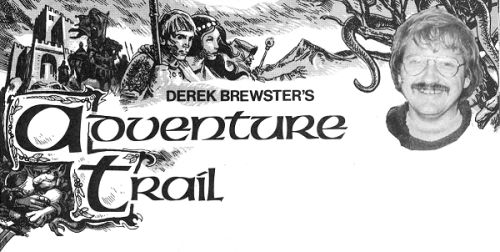

 uilled
games began to surface in 1984. The Quill utility from Gilsoft was a
mixed blessing. On the one hand it allowed programmers to develop complex
programs without the need to worry about how these programs might be
implemented. This improved access allowed people with imagination and flair to
produce original software. On the other hand The Quill gave access to
many dabblers who, quite frankly, should never have produced software. Their
heads full of nonsense put about by the frivolous press about easy money, they
thought writing software was much easier than it actually is.
uilled
games began to surface in 1984. The Quill utility from Gilsoft was a
mixed blessing. On the one hand it allowed programmers to develop complex
programs without the need to worry about how these programs might be
implemented. This improved access allowed people with imagination and flair to
produce original software. On the other hand The Quill gave access to
many dabblers who, quite frankly, should never have produced software. Their
heads full of nonsense put about by the frivolous press about easy money, they
thought writing software was much easier than it actually is.
Writing a computer game is no different to writing any other game, whether for a board or a television studio. It must possess enough fine qualities to make the player actually want to get involved and to spend some time getting to know the rules. Once the player has finished playing he/she should wonder at how clever the whole game’s design was and how well it played.
Although The Quill imposes severe restrictions upon the design of a game it is clear from analysing the charts that this is not such a fundamental factor in determining the success or failure of a Quilled adventure. Hampstead was a Quilled game and a chart success. The reasons for this seemingly anomalous situation lie in that game’s refreshing originality and cutting humour (notice cutting humour, not slapstick which was surpassed soon after Laurel and Hardy and only lives on in BBC comedies). Tower of Despair did not make the charts but it had an imaginative story and was well laid out with a fine redesigned character set.
The factors which link good adventures are borne of the thought, design and discussion which precedes their implementation. Even in the case of an all machine-coded adventure, the design stage takes more time than the coding.